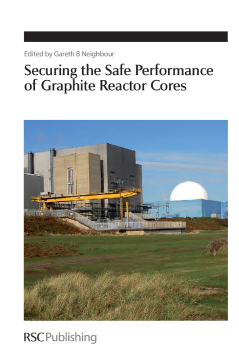
Additional Information
Book Details
Abstract
Nuclear power currently contributes some 20% of the electricity needs of the UK and is rising rapidly on the political agenda due to environmental and economic factors, and yet all but one of the UK's existing nuclear reactors is expected to close by 2023. The increasing emphasis towards nuclear power rests on security of supply and reducing carbon emissions. This comprehensive book provides an account of the recent advances in securing safe performance of graphite-moderated nuclear reactors both within the UK and abroad which underpin life extension whilst maintaining high levels of plant performance. These reactors rely on graphite as a moderator in the form of layers of interlocked graphite bricks which undergo complex changes when exposed over long periods to the effects of neutron irradiation and radiolytic oxidation. The objective of this book is to outline the current approaches in terms of assessment methodologies, surveillance and test methods, performance prediction, graphite reactor decommissioning, regulatory requirements and the relevance to future reactor designs. The book is a sequel to the successful RSC publication "Managing of Ageing Processes in Graphite Reactor Cores", but with the emphasis on the challenges for the future safe performance. It is hoped that the contributed papers will also help in the design, construction, operation and eventual decommissioning of the new generation of graphite-moderated reactors. Papers presented in the book represent contributions from the most eminent specialists in the field and reflect the UK's contribution over the past 50 years to graphite reactor technology that will remain significant for years to come, especially in the development of Generation IV designs. This seminal book is written in a way that takes the reader from fundamental knowledge to reactor operation in a straight forward and understandable manner - ideal for non-specialist as well as a unique reference for the specialist. It is fully illustrated to aid understanding and is relevant to a wide range of readers from policy makers to reactor operators.
Gareth Neighbour is a Senior Lecturer in Engineering at the University of Hull and has been involved with the nuclear industry since 1989. He completed his PhD at the University of Bath in collaboration with the Berkeley Nuclear Laboratories of the then CEGB on the topic of Microstructural Processes Leading to Fracture in Nuclear graphite in 1992 and has maintained a strong interest in nuclear graphites ever since. He joined the Department of Engineering at the University of Hull in February 2001 from the University of Bath where he formed and then led the internationally recognised Bath Nuclear Materials Group. During five years at Bath, he saw his group thrive to hold a broad range of contracts by providing an independent research and development activity to the nuclear power industry including the regulator and the IAEA. Prior to this, during 1992-1996, he worked for AEA Technology at their Windscale plant where, amongst other things, he worked on post-irradiation evaluation of reactor fuel. Gareth has in excess of 60 open literature publications as well as a similar number of substantive and definitive industrial reports for external organisations covering a diverse range of subjects from modelling dimensional change in irradiated moderator graphites to product development and in particular, redundancy in design. Currently, Gareth's research activity falls under the banner of "Materials and Process Performance". The main thrust is the effectiveness of UK gas-cooled reactor core designs, particularly the functionality of core components to support life extension using various modelling and analytical techniques. Coupled with this is his interest in policy formulation using a systems approach for radioactive materials treatment, waste minimisation and decommissioning and in particular, the effect of risk assessment methodology has on environmental and societal decision making.
